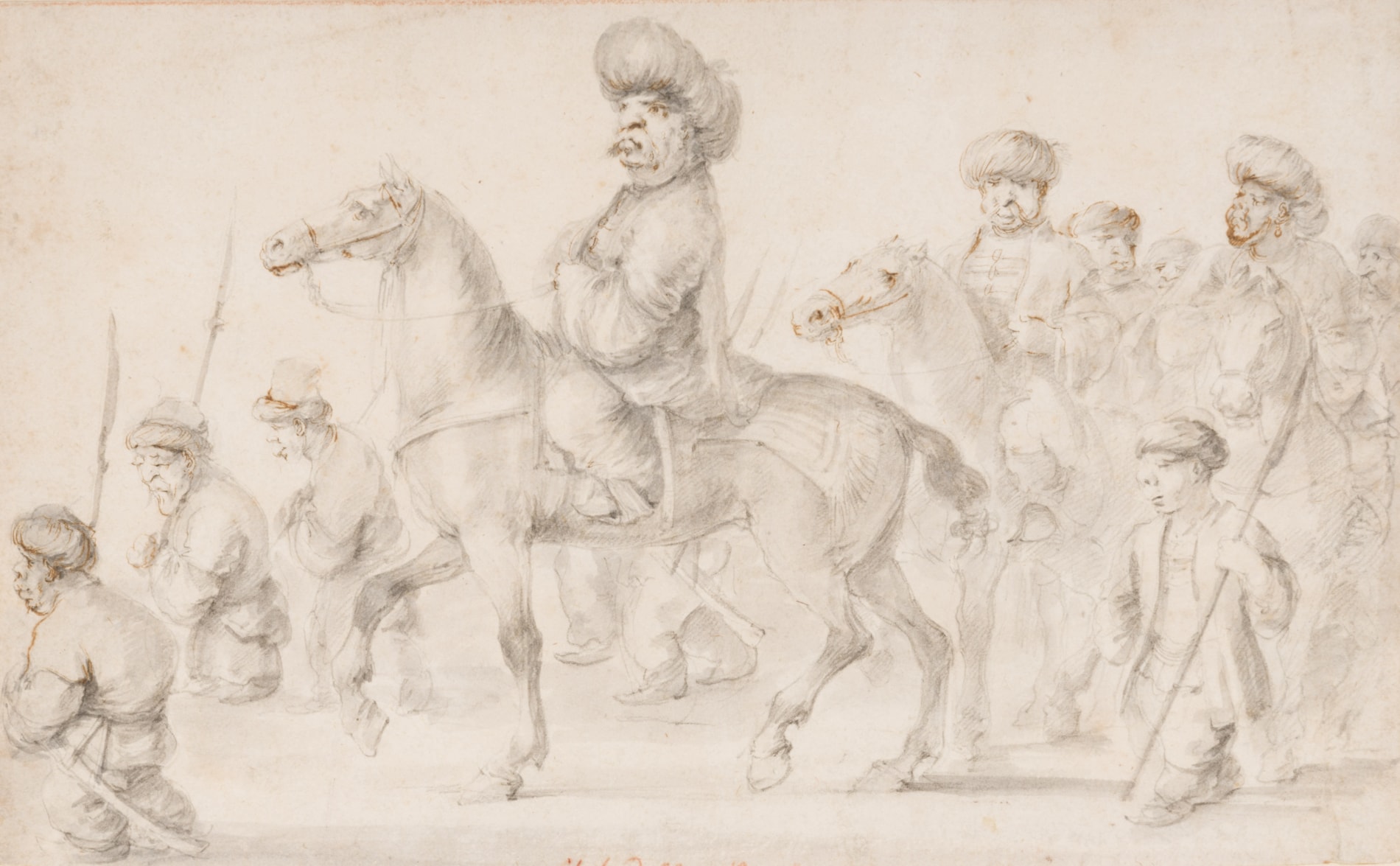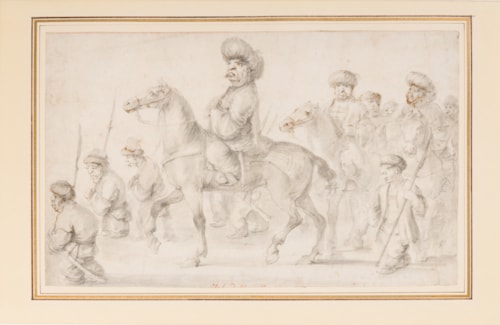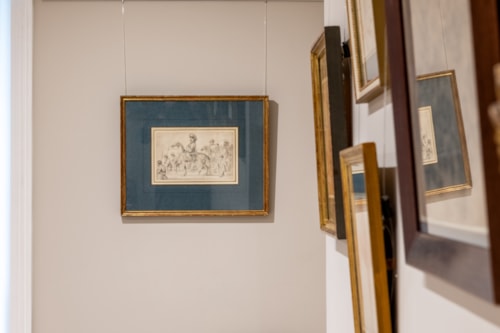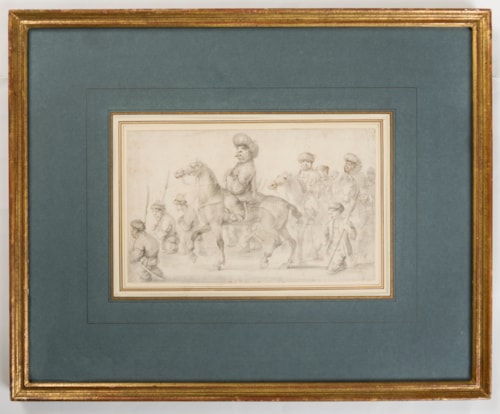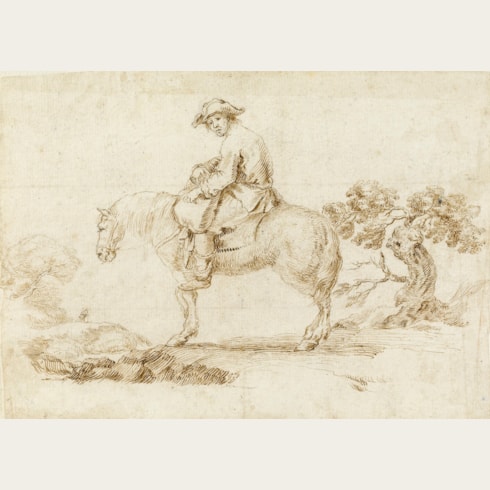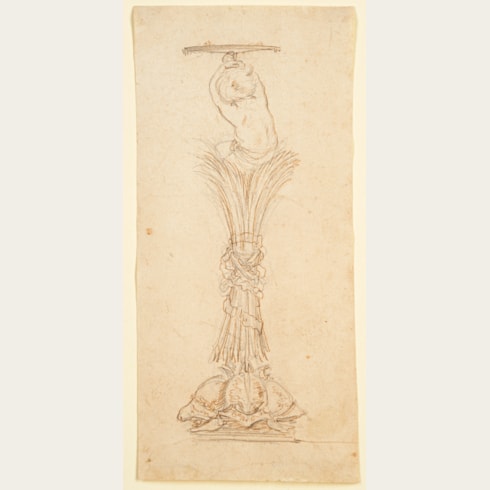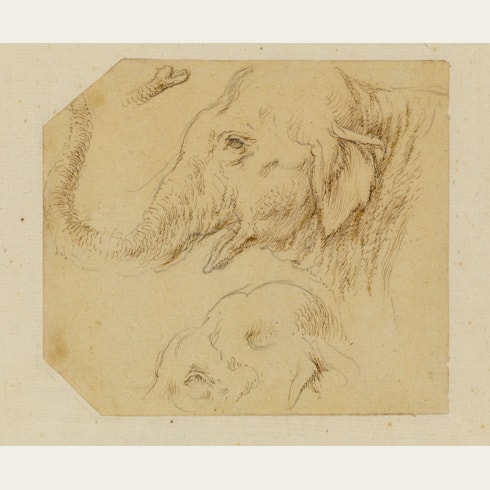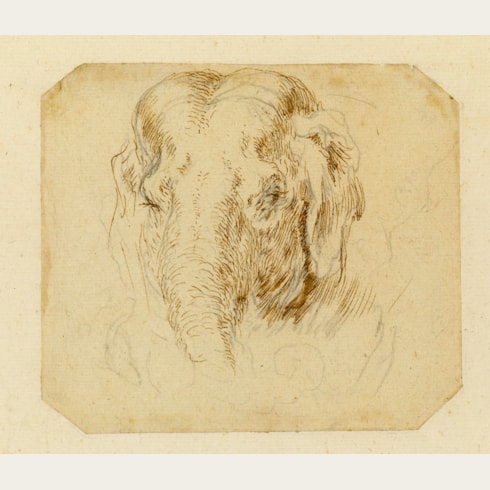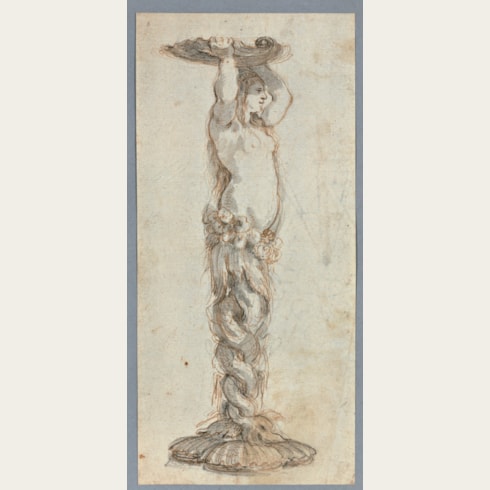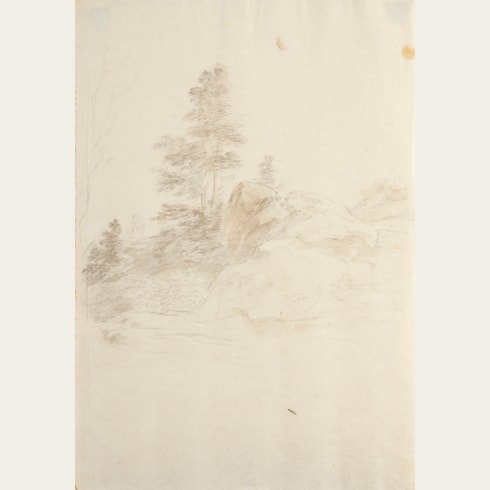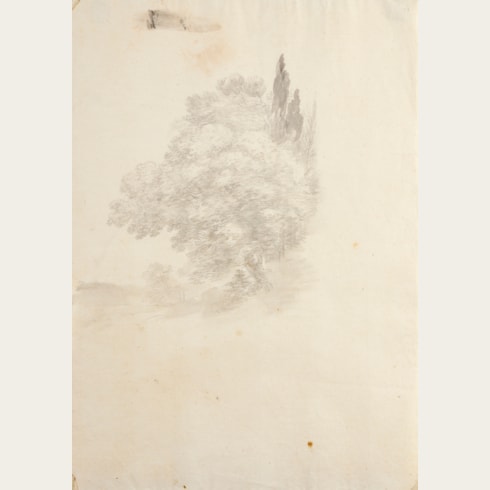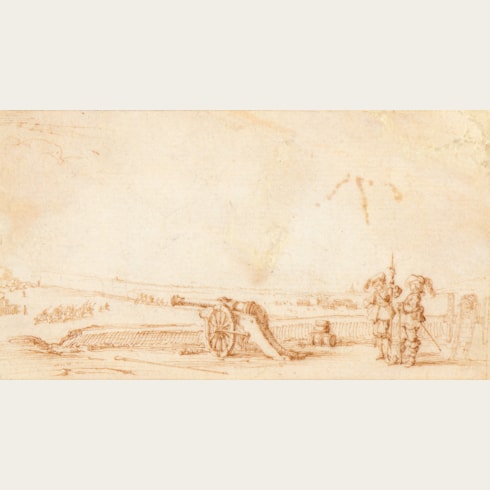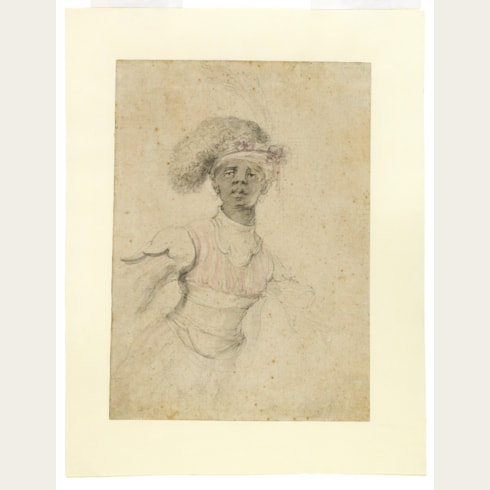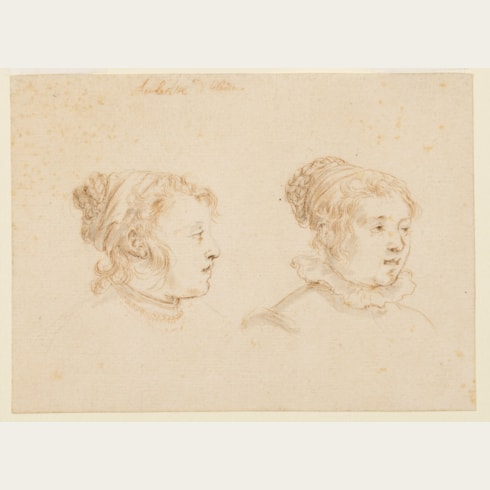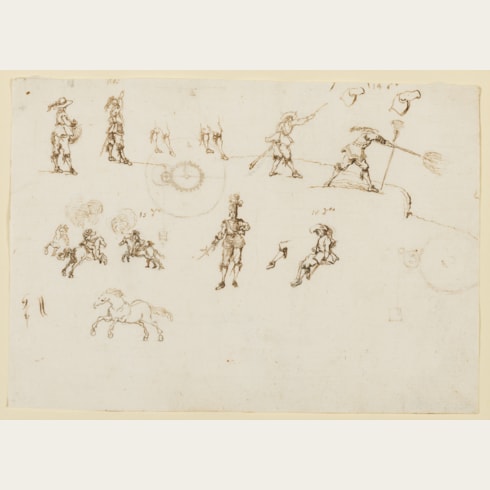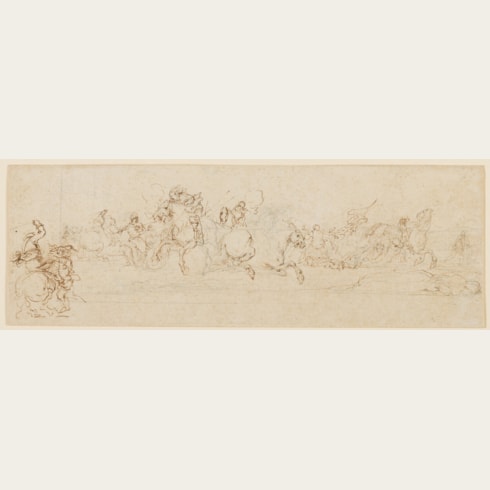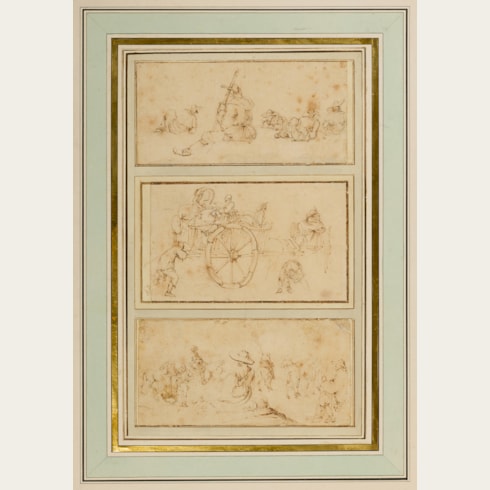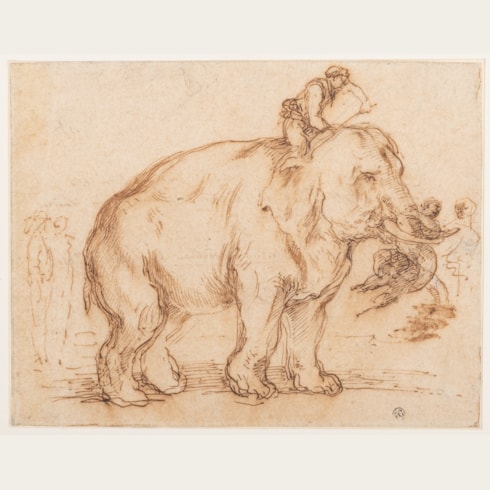Stefano DELLA BELLA
(Florence 1610 - Florence 1664)
Oriental Horsemen in Procession, Escorted by Dwarves with Pikes
Illegibly inscribed [partially cut off] in brown ink (or red chalk?) at the lower centre edge.
174 x 288 mm. (6 3/4 x 11 3/8 in.)
As Françoise Viatte has noted of these drawings, which she dates to late in the artist’s career, ‘It may be that the dwarf themes appealed to [Della Bella] not only because of his interest in the unusual so apparent in his graphic work, but also because of their suitability to the small formats that he preferred…The artist’s intentions are satirical and not comic. Della Bella’s burlesque is cold and grating caricature, with no place for laughter...It is quite clear then that although Stefano’s Bambocciate may have been executed as a private pastime, they reflect the contemporary taste for the unusual, for that “invenzione bizarissima” which [Filippo] Baldinucci places in the Florentine tradition.’
A gifted draughtsman and designer, Stefano della Bella was born into a family of artists. Apprenticed to a goldsmith, he later entered the workshop of the painter Giovanni Battista Vanni, and also received training in etching from Remigio Cantagallina. He came to be particularly influenced by the work of Jacques Callot, although it is unlikely that the two artists ever actually met. Della Bella’s first prints date to around 1627, and he eventually succeeded Callot as Medici court designer and printmaker, his commissions including etchings of public festivals, tournaments and banquets hosted by the Medici in Florence. Under the patronage of the Medici, Della Bella was sent in 1633 to Rome, where he made drawings after antique and Renaissance masters, landscapes and scenes of everyday life.
In 1639 he accompanied the Medici ambassador to the Parisian court of Louis XIII, and remained in France for ten years. Della Bella established a flourishing career in Paris, publishing numerous prints and obtaining significant commissions from Cardinals Richelieu and Mazarin, as well as other members of the court and the aristocracy. Indeed, the majority of his prints date from this fertile Parisian period, and include scenes of life at the French court. After his return to Florence in 1650, Della Bella continued to enjoy Medici patronage. Over the next few years he produced drawings of the gardens of the Medici villa at Pratolino, the port of Livorno and the Villa Medici in Rome, and also became the drawing master to the future Duke, Cosimo III. He was also active as a designer of costumes for the various pageants, masquerades and ballets of the Medici court. After suffering a stroke in 1661, Della Bella appears to have worked very little before his death three years later.
Only a handful of paintings by Della Bella survive to this day, and it is as a graphic artist that he is best known. A hugely talented and prolific printmaker and draughtsman, he produced works of considerable energy and inventiveness, with an oeuvre numbering over a thousand etchings, and many times more drawings and studies. Significant groups of drawings by Della Bella are today in several public collections, with around six hundred sheets in both the Uffizi and the Louvre, and approximately 150 drawings apiece in the Istituto Nazionale per la Grafica in Rome and the Royal Collection at Windsor Castle.
Provenance
John Goelet, Baltimore, Maryland and Sandricourt, Oise, France
Private collection, New York.
Literature
Exhibition

